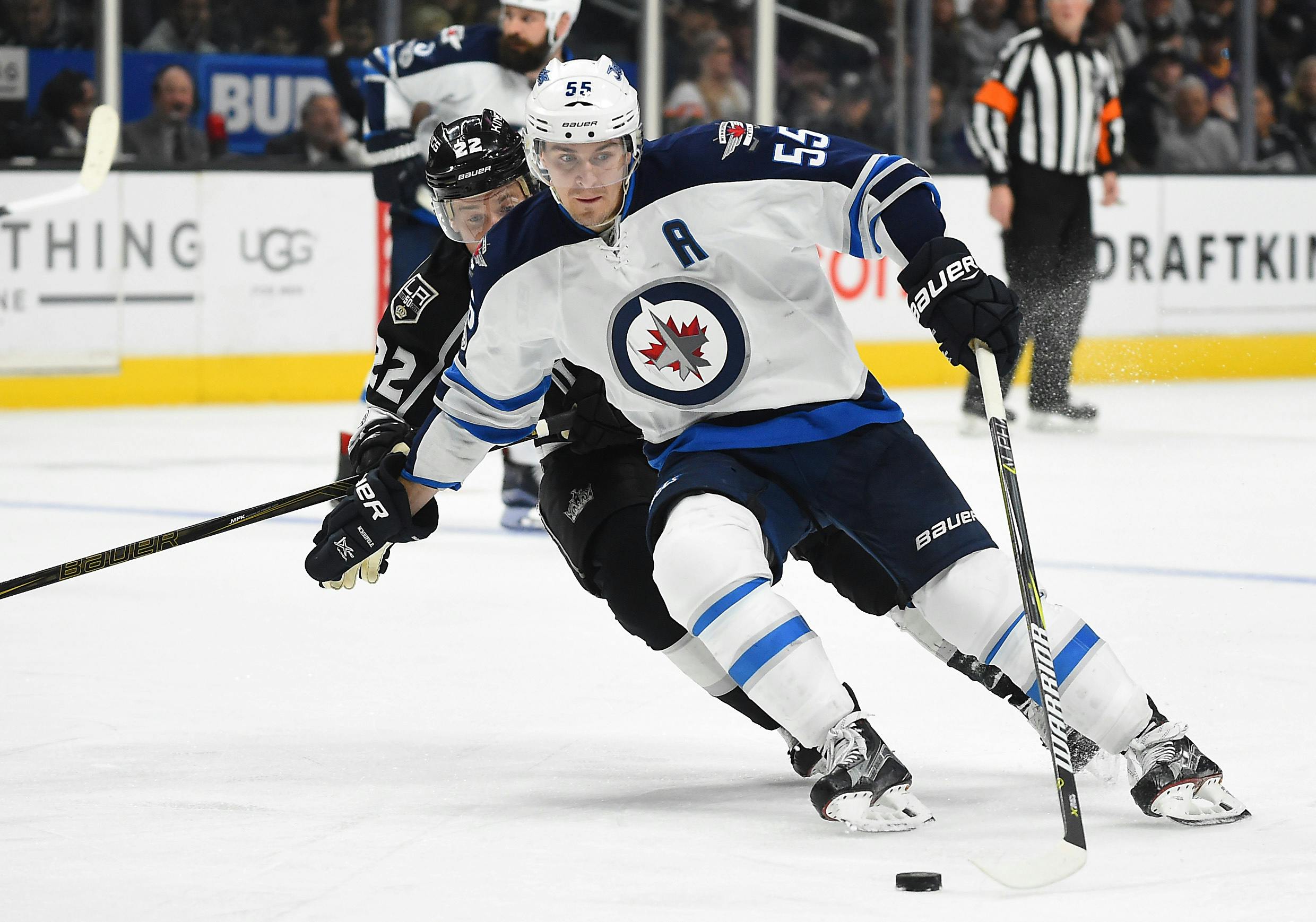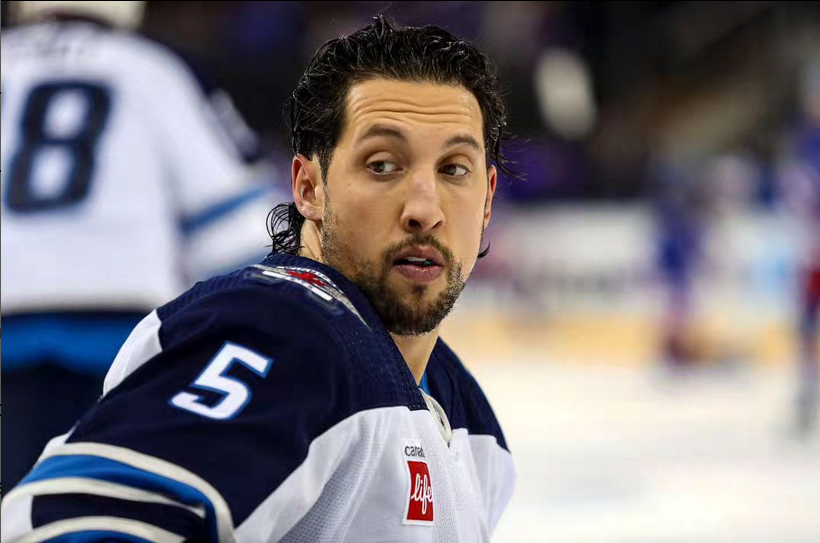Pilot’s Logbook: Mark Scheifele

By Garret Hohl
6 years agoThe Winnipeg Jets’ 2016-2017 disappointing season finally ended. While the extent of disappointment may be subjective from individual-to-individual dependent on expectations, fans without a single franchise playoff win prefer their seasons to carry some post-season excitement.
So, what went wrong? What went well? How do the Jets measure up against their competition? Which areas actually require improvement relative to others?
If your car breaks down, you need to know what is wrong with it prior to dropping cash to fix it. With that in mind, we continue our in-depth investigation on the Jets’ performance breaking down the team player-by-player from worst-to-best according to statistical impact, with some adjustments made by my own, personal analysis.
Up next: Mark Scheifele.
Basic Statistics
| GP | G | A | P | +/- | PIM | PPG | PPP | SHG | SHP | GWG | OTG | S | S% |
| 79 | 32 | 50 | 82 | +18 | 38 | 7 | 15 | 0 | 2 | 5 | 2 | 160 | 20.0 |
Mark Scheifele has developed into one of the premier offensive talents in the NHL. He put over a point per game pace, dominating the box score stats both at even strength and on the power play. His shot totals have room to grow, especially as he is unlikely to repeat a 20 per cent shooting season, but his milk and butter is in his vision and ability to see the ice.
Goals Above Replacement

Goals Above Replacement data courtesy of @DTMAboutHeart. Reminder that GAR is an aggregate statistic, so it is not relative to games played or ice time.
Goals Above Replacement (GAR) combines multiple statistics in terms of one currency, allowing one to estimate a player’s overall impact. It is imperfect, as it combines many imperfect statistics, but it is also a severely useful tool.
Scheifele was the 22nd highest forward in overall impact and 19th overall in even strength impact. Overall, Mark Scheifele is a pretty good player. The 6’3, bona fide top-line centre drives results almost exclusively through offense. While Scheifele is above replacement level in terms of defensive value, he is merely around league average.
At 24-years-old, Scheifele still has room to grow, but he’s approaching his ceiling. It is tough to tell with any certainty where that ceiling is though with his consistent and drastic year-to-year improvement.
Scheifele has a lot of room to grow defensively and through face offs, but it looks like the Jets were able to grab that offensive #1, star-potential centre they drafted with their first ever draft pick as a franchise in Winnipeg.
Advanced Metrics

| TOI | CF% | REL CF% | G60 | A60 | P60 |
| 1217 | 50.1 | +2.67 | 0.84 | 1.68 | 2.51 |
Scheifele may not drive shot differentials to the same efficiency as Blake Wheeler or Mathieu Perreault, but he still is one of the Jets’ strongest forwards in that area while also producing elite production relative to ice time. Scheifele produced 2.51 five-on-five points per hour for the second consecutive season. Only Connor McDavid and Sidney Crosby produced more points relative to ice time (while also skating for 1000+ minutes).
In terms of producing offense, there are few players who have been as effective. Over the past two seasons combined (again minimum of 1000 minutes) the top five-on-five producers per minute are McDavid, Crosby, Connor Sheary (AKA someone who plays with Crosby), and Mark Scheifele.
Microstatistics

Visual is for minutes played in 2015-16 and first half of 2016-17 combined.
Scheifele is another well rounded forward offensively speaking. His shot volume, dangerous shots (in terms of pre-shot passing movement), and primary shot assists are at above average second line value. His real impact comes from his ability to improve the Jets’ transition game and build up the play while positively impacting overall contributions.
For zone exits, Scheifele sits about average for successful exits per possessions, but does well in tilting them towards possession exits.
Mark Schiefele is a zone-entry super star, with nearly 70 per cent of his entry attempts being with possession (a team high) and 34 per cent of his possession entries producing at least one successful pass (also a team high). This is the best manner to produce sustainable offense, and I’m not surprised Scheifele likes to fit the mold of the modern, fancystats era, offensive machine.
Scheifele is a well known student of the game, and I would not be surprised that he knows of and understands a lot of the research behind things like zone entries and zone exits. His hunger and drive is a big reason for Scheifele growing from being a bit of a head scratcher draft pick (myself included) to an elite offensive talent.
Please support Corey Sznajder (@ShutDownLine) for his contributions in manually tracking microstatistics. He has a Patreon page where you can make a donation for his tireless work supporting the community. Also, give Ryan Stimson (@RK_Stimp) a follow.
Final Thoughts
Scheifele is a number one centre, both by being arguably the Jets second best forward and by being one of the best centres in the entire NHL.
The Jets are set for the long term with an elite offensive centre locked up for seven more years. At 24-years-old, Scheifele has still some room to grow, especially defensively and at face offs. If he can push himself from an elite offensive centre to elite two-way centre, the Jets could be looking at a Stanley Cup contending team for quite some while.
The Jets have a very strong top end and a lot of promise for the future.
Scheifele, Wheeler, Perreault, and Ehlers all put up first-line value in impact. Wheeler and Perreault should take a while to regress, Scheifele is just entering his prime, and Ehlers still has yet to enter his prime. Laine could grow into a top-line talent as soon as next season.
That’s five potential top-line calibre forwards as soon as next year, with Bryan Little historically performing well enough as a second line option.
The issue is the depth below carries a lot of questions. Lowry provided a lot of value, but I am doubtful his power play impact repeats and a lot of his value came from receiving near top line minutes in the grand scheme of the season. Kyle Connor was a disappointment for the first half of his rookie year, but became one of the best players late in the AHL season. Nic Petan has a ton of talent but a Jekyl and Hyde sophomore year. Joel Armia has defensive skill, but seems to struggle putting the puck into the net and tilting the ice. Marko Dano historically can score like a middle-six forward and produced great defensive results, but doesn’t seem to gain any trust within the organization. Andrew Copp looks like the golden boy for the new breed of fourth line players with skill, but there are limits on his upside. Jack Roslovic looks promising but still will need to reach the NHL as a regular, let alone perform well in the league.
A lot of questions marks on the Jets future, many of which will likely be answered next season, but also a lot of room for hope.
It’ll be a defining year for the Winnipeg Jets next season with how their forwards develop (and how they fill out their defensive roster).
All numbers courtesy of @NaturalStatTrick, @ShutdownLine, or @DTMAboutHeart unless otherwise noted. Please follow them all.
More Pilot’s Logbook Series
- 2016-2017 Team Review
- (Not So) Special Teams
- Team Development Over Time
- Zone Exits
- Zone Entries
- Chris Thorburn
- Mark Stuart
- Alexander Burmistrov
- Brandon Tanev
- Julian Melchiori
- Kyle Connor
- Shawn Matthias
- Drew Stafford
- Ben Chiarot
- Nic Petan
- Tyler Myers
- Andrew Copp
- Paul Postma
- Marko Dano
- Toby Enstrom
- Adam Lowry
- Joel Armia
- Dustin Byfuglien
- Bryan Little
- Josh Morrissey
- Patrik Laine
- Nikolaj Ehlers
- Mathieu Perreault
Recent articles from Garret Hohl





